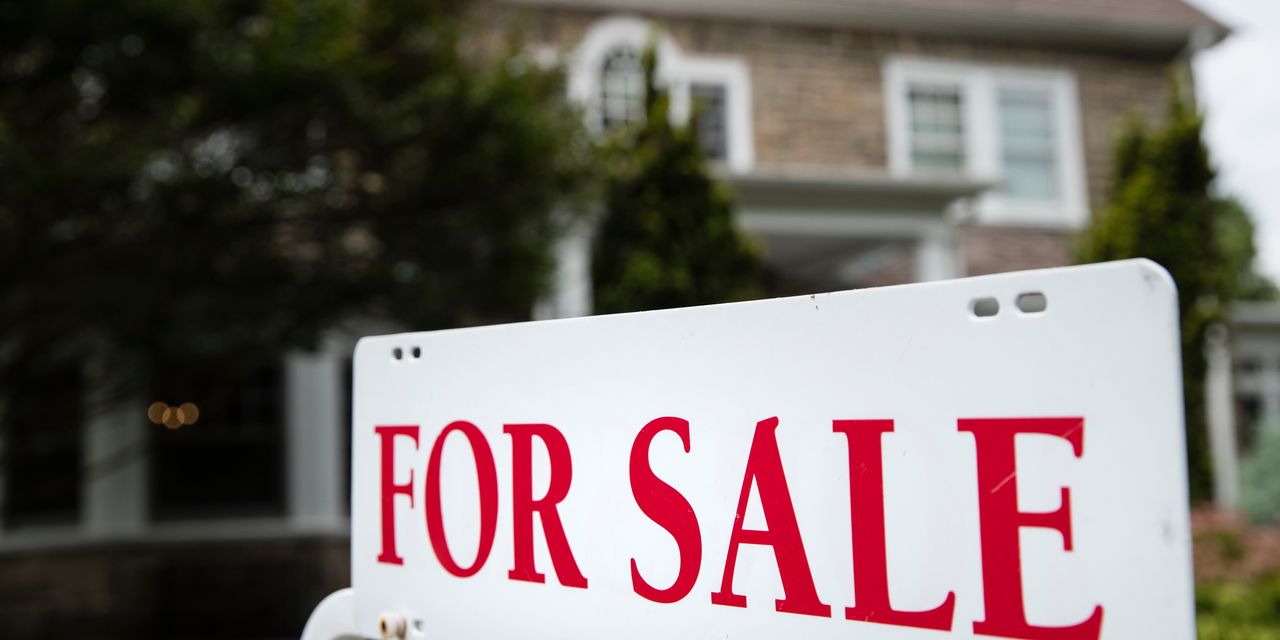The 30-year fixed-rate mortgage averaged 5.22% as of August 11, according to data released by Freddie Mac on Thursday — up 23 basis points from the previous week. One basis point is equal to one hundredth of a percentage point, or 1% of 1%.
The average rate on the 15-year fixed-rate mortgage rose 33 basis points over the past week to 4.59%. The 5-year Treasury-indexed hybrid adjustable-rate mortgage averaged 4.43%, up 18 basis points from the prior week.
“Although rates continue to fluctuate, recent data suggest that the housing market is stabilizing as it transitions from the surge of activity during the pandemic to a more balanced market,” Sam Khater, the chief economist at Freddie Mac, said in a statement.
“Declines in purchase demand continue to diminish while supply remains fairly tight across most markets,” he added. “The consequence is that house prices likely will continue to rise, but at a slower pace for the rest of the summer.”
Elevated home prices continue to be a challenge for first-time buyers who may have experienced a bout of relief when rates dipped below 5% last week.
According to a separate report from the National Association of Realtors also released Thursday, 80% of U.S. metros saw their median single-family existing home sales price increase by double digits from the previous year.
The price of a median single-family home that’s not new construction rose to $413,500, up 14.2% from the previous year.
Both rates and prices are challenging first-time buyers’ wallets.
The monthly mortgage payment on a typical existing single-family home if a family pays with a 20% down payment has jumped by $444 to $1,841, with rates rising from the first quarter to the second quarter of this year. The monthly payment is up 50% from one year ago.
For a buyer looking at a starter home, valued typically at $351,000, with a 10% down payment loan, their monthly mortgage is $1,810. That’s up 31% from the prior quarter, and up 49% from one year ago.
A first-time buyer is spending nearly 37% of their family income on their mortgage, which is up from 28.7% the previous quarter.
“Home prices have increased at a pace that far exceeds wage gains, especially for low- and middle-income workers,” Lawrence Yun, the chief economist at NAR, said in a statement.
The sales picture also varied across the country in the second quarter.
The NAR said that 44% of sales of single-family existing home sales came from the South in the second quarter. The region also posted the largest home price appreciation of 18.2%.
Prices also increased by 12.7% in the West, 10.1% in the Northeast, and 9.7% in the Midwest in the second quarter.
Here are the top five metro areas with the largest year-over-year gains:
- Fayetteville-Springdale-Rogers, Ark.-Mo., with a 31.9% increase in existing-home prices
- Lakeland-Winter Haven, Fla., at 31.4%
- Naples-Immokalee-Marco Island, Fla., at 28.9%
- North Port-Sarasota-Bradenton, Fla., at 28.8%
- Myrtle Beach-Conway-North Myrtle Beach, S.C.-N.C., at 28.5%
Here are the top five most expensive markets in the U.S., courtesy of the NAR:
- San Jose-Sunnyvale-Santa Clara, Calif., which notched an 11.8% year-over-year gain in home prices. The median price of an existing home was $1.9 million.
- San Francisco-Oakland-Hayward, Calif., with an 11.9% increase in home prices, median price of $1.55 million.
- Anaheim-Santa Ana-Irvine, Calif., with a 17.2% increase in home prices, median price of $1.3 million.
- Urban Honolulu, Hawaii, with a 17.3% increase, median price of $1.15 million.
- San Diego-Carlsbad, Calif., with a 13.6% increase, median price of $965,900.
The yield on the 10-year Treasury note
TMUBMUSD10Y,
fell to 2.76% in early trading on Thursday.



